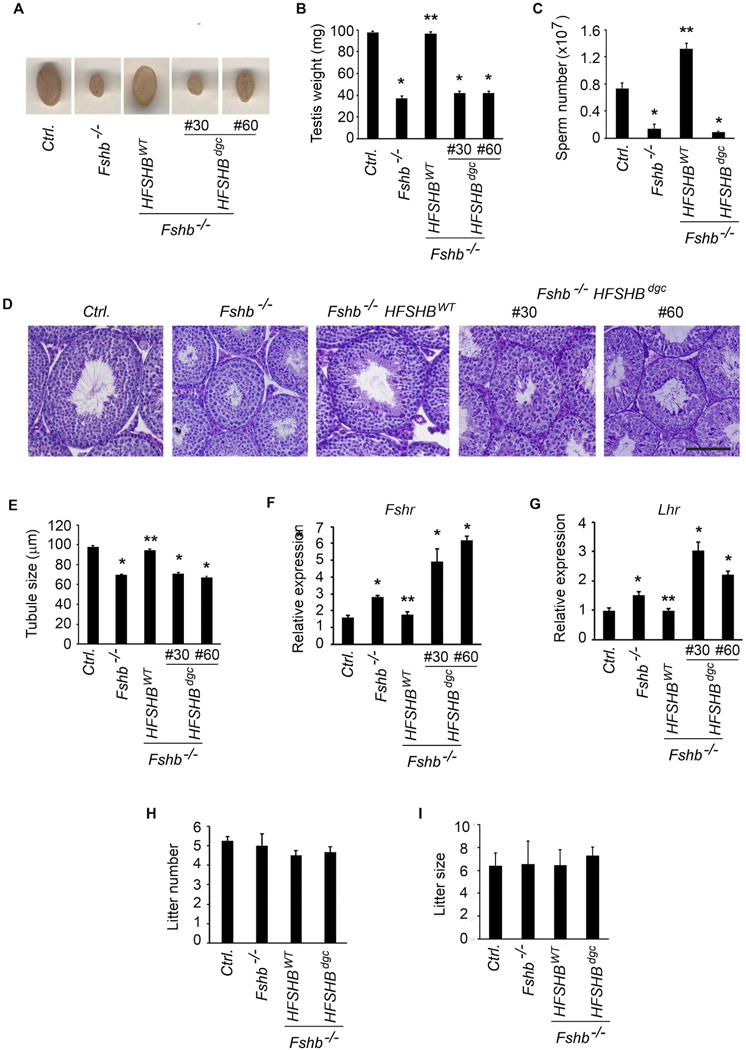Fig. 4.

The HFSHBdgc transgene, in contrast to the HFSHBWT transgene, did not rescue Fshb null male mice as illustrated by gross testicular morphology (A) and size (B), quantitation of epididymal sperm (C), PAS/hematoxylin-stained testis histology (D), tubule diameter measurements (E) and FSH-responsive gene expression analysis by real time qPCR assays (F and G). Breeding performance over a period of 6 months was assessed in terms of number of litters produced (H) and litter size, i.e. number of pups per litter (I) is independent of FSH and Fshb genotype tested. *P < 0.01 versus Ctrl. or HFSHBWT groups; ** P < 0.05 versus Fshb−/− group. Fshr: follicle-stimulating hormone receptor, Lhr: luteinizing hormone receptor.
